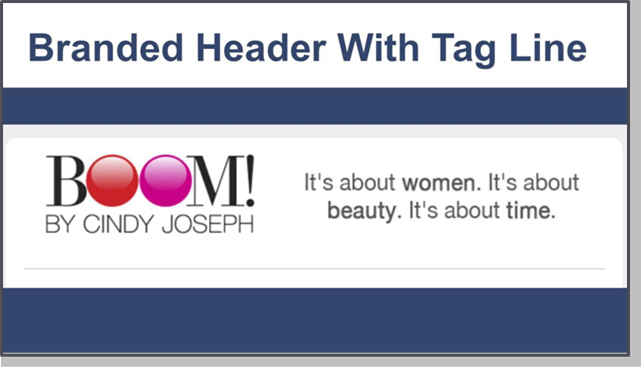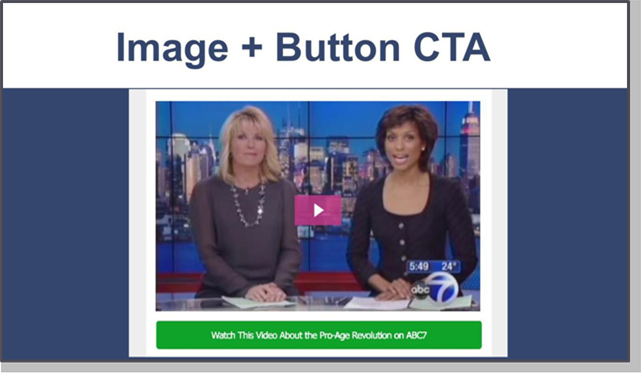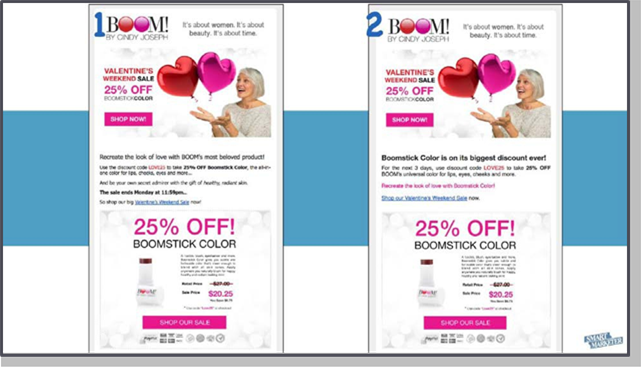Ezra Firestone
Ezra Firestone has been working in eCommerce for over a decade, and is thought by many to be the leading eCommerce expert in the world. Owner and operator of several seven- and eight-figure businesses, he uses the insight gained from these business to produce courses and software. Ezra’s motto is “Serve The World Unselfishly And Profit”.
Communication is the skill set that all marketers should acquire. Simply put, your business is engaging with a group of people who are having a collective experience. Your customers are a group of people who are having a specific experience and your business is focused on communicating to them about said problem. Your communication leads directly to conversion.
How do you communicate effectively with them?
Email is the most profitable communication channel.
Let’s look at an example. Out of $18 million dollars in total revenue, 32% of this company’s revenue came from email. That’s almost double the amount of revenue that came from ad campaigns.

18% of the total revenue made from email marketing comes from manual broadcast campaigns. These manual broadcast campaigns are emails being “broadcasted” to a group of people.
Before diving into the 6-Day Double Down, let’s talk about what the emails within the strategy are going to contain.
Each of these emails must contain the following:
- Headline
- Image
- Button
- Video Icon (If necessary)
Once these elements are identified, this is the email layout you want to use:
- Branded Header with Tagline
- Headline
- Sub-Headline with Link CTA
- Image Call to Action
- Button Call to Action
- Main Content with Link CTAs
- Signature with Tagline + Contact Info
- Final Button Call to Action
- Social Icons and Links
- Company Address
- Reminder Paragraph About Value Proposition + Brand Mission
- Unsubscribe Link
An example of a branded header with tagline looks like this:

In the header, your company should express what it does in one sentence. In this example, the company tells you everything about their business. They’re about women, about beauty and it’s about time. Another example for a branded header with tagline for a different niche is the header “Serve the world unselfishly and profit” for a publishing business.
Your headline and subheadline are the main copy within the email. Always start with text and a blue underlined text link so people reading on their phone can quickly click on it. For example, the headline and subheadline for the BOOM brand would look like this:
“You have to see this…
A while back, New York’s ABC7 aired this amazing story about BOOM and the Pro-Age Revolution that you’ve started.
You can watch it here:”
Directly after the text call to action, the blue linked text above, will come an image call to action and a button call to action. People consume content in different formats. Some people like to read. Some people like to look.
Some people like to watch. Having your communication available in all media formats increases the chances of it being received by the customer. An image and button call to action can look like this:

The main content with link call to actions is the body copy of the email itself. After the body, you’ll place the signature, tagline and contact information. The final call to action will repeat whatever the goal of the email is and be followed by social links and a reminder paragraph about the value proposition and brand message above the unsubscribe link.
The reminder paragraph is there to remind readers the value this email is providing them. For BOOM this reminder looks like this:
“We strive to provide a community for women who are excited about life and ready to celebrate their beauty. Your participation is what fuels the pro age revolution. We’re a family run business and emails are a crucial way for us to contact our friends and fans. We regularly provide coupons and free content updates on our business. If you’d like to unsubscribe, click here or you can tell us how we can improve our experience by clicking here.”
Adding the unsubscribe link directly after the value proposition and brand message has been able to decrease unsubscribes by 30%.
Once these 12 main elements of the email are established, it’s time to begin A/B testing. For the BOOM brand this started with a split test. The test measured the success of blue links versus pink links. Unsurprisingly, with the target audience of BOOM, the pink links had a higher click rate.
Using the email elements mentioned above, a successful “6-Day Double Down” strategy can be implemented. This strategy is used when something is being promoted. Here’s what it looks like:

In days one through three, two emails be sent. The first email will be sent at 7:00AM and the second at 7:00PM. When three emails are sent in a day, the first is sent at 7:00AM, the following at 5:00PM and the last at 10:00PM.
Day One
The first email sent on day one is the announcement of the promotion and the deadline of when the promotion ends. The second email is the announcement, the deadline and the unique selling proposition.
These emails only vary in the headline and subject line and both have a conversion asset as can be seen in the:
- Image
- Testimonial
- Copywriting
The image, testimonial and copywriting are going to be the exact same as that found on the landing page that the call to action leads them to. This is a marketing trick as people automatically feel more comfortable when they arrive on the landing page because they’ve already seen it before.

Day Two
The third and fourth email sent on day two aren’t going to vary from Day One’s emails. The hero at the top is updated, the copywriting is modified slightly. The reader is reminded of the deadline. The idea is to tell your community that you have a promotion. They like you, they know and they trust you and they want what you have on sale.

Day Three
On day three you highlight the unique selling proposition and its scarcity. “Hurry this thing ends tomorrow at midnight. Shop our Valentine’s Day sale now! Use this coupon code.” What has changed from the previous emails to this one?
- New images
- Subject line
- Copywriting

Day Four
Day four historically is the day you’ll make 50% of your money. As a marketer, you’re saying “Hey, this thing is going away” and people are overwhelmed with such a hard deadline.
The deadline will force them to take action or not.
The emails sent on day four repeat phrases like: Our sale ends tonight!, Our sale ends in seven hours!, or Our sale ends in two hours! Every other component within the email is almost identical to the past few days’ emails. Essentially, these emails are counting down the last few hours of the promotion.

Bonus: Day Seven
Day seven is focused on upselling products to those who bought from the promotion and those who didn’t. If people purchased, you’ll send them an email and say, “Hey, you shopped BOOM’S Valentine’s weekend sale. Send us a private message on Facebook to get 15% off for the next 12 hours only.” Then, that evening send another email and say, “Hey this is your last chance to get 15% off.” You’re telling your buyers that because they bought for this limited time window, they can get a discount on another item that you have.
In order to do this, you’ll use a reference URL in ManyChat on Facebook messenger. When you sign up for ManyChat, you connect your Facebook fan page, click growth tool and then click on ref URL. This URL opens up a conversation in Facebook Messenger. In the day seven email when you say, “Hey, Get this 15% off special discount because you bought from BOOM today,” they click the email and it opens up a Facebook Messenger message that says, “Because you ordered you’re going to get 20%. Click here.”
What you just did was bring your email list to your Facebook page and help
populate another communication medium.
As soon as your customer clicks the ref URL link, they become a subscriber in Facebook Messenger. You’ve now moved them from an email list to your Facebook list as well.

This is the “6-Day Double Down” strategy.
Let’s look at how to create promotions for second-time buyers and people who didn’t initially purchase.
Email Campaign To Encourage A Second Purchase
Following up your email campaign is a new campaign to increase brand loyalty.
What if every time you run a sale, you’re able to get 10% of the people who purchased the product to buy it again?
What if you could get 10% of those second-time buyers to buy for a third time?
This is achieved by offering a special discount, with another deadline, to those who have purchased before. For example, “Hey, because you
purchased from BOOM this holiday season we’ve got a special gift for you. For the next three days only, you can get 15% off.” Notice this second discount is bigger than the initial discount, incentivizing the customer to buy again.
On top of the new discount and deadline, this email will also highlight other sale items.
To turn this second-time buyer into a third-time buyer, it is essential to have a specific thank you email for second-time buyers. They should not receive the same thank you email they received when they made their first purchase.
Confirm their order, acknowledge that they’ve ordered from you twice, offer
them support and bring them into your community.
Once a customer has purchased from you twice, you want to enroll them in your missions. Start talking to them about what you are up to in the world beyond selling products, why you’re in the business you are in, who you are and what you care about. At this point they are interested and it is proven that people don’t like faceless brands. Each brand must have a mission, a story and a purpose. Give these repeat customers a way to engage with you on social platforms.

Email Campaign For Non-Buyers
The upset for non-buyers is very similar to the one for first-time buyers. It varies only in the discount given. Non-buyers are offered the same discount as the initial promotion with a one day extension. For example, “Hey, for one more day you can get the same sale but you have to Facebook message us.”
Notice in this non-buyer email, there are images, videos and links. The people who saw the email on day one, but got distracted and didn’t purchase, can be retargeted and motivated to purchase. $2,000 in retargeting can lead to $18,000 in revenue.
Then, they’ll go through the same strategy as listed above, with the ref URL.

These strategies are specifically designed to promote a product and increase
sales. But, these aren’t the only type of email brands should be sending.
There are three types of emails a brand should be sending:
- Trust builder (with social proof)
- Content
- Offers
Trust Builder Emails
Trust builder emails are designed to build trust between the brand and the consumer. Ways to build trust are through social proof, customer testimonials, science, case studies, manufacturing process and transparency. Trust builder emails should be a large part of the emails being sent to your subscriber database.

Content Emails
The goal of content emails is to engage people in branded content like tips, tricks, market related blogs and videos. Any type of content related to the benefit of the product or related to what the community is engaging with.
For example, a chef could send YouTube videos of chef knife skills, Emerald or Gordon Ramsey. This isn’t new content and all he’s doing is sharing what is already on the internet. The strategy comes in when, every six weeks, he runs a sale and increases profits on his knives.

Offer Emails
Offer emails are designed to sell products, cross sell items, introduce new products and promote pre-order campaigns. Essentially they are there to sell. These are the emails we talked about previously promoting discounts to increase product sales. They can also be used to promote products people don’t know about yet or tell them about services they haven’t engaged with yet. Offer emails that incorporate testimonials have an increased chance of selling products. “Hey, this customer had this experience with this offer and it changed their life in this way” is stronger than “Here is why this offer is great.”

Email is your main communication platform with your potential and recurring customers. As one of the most profitable communication channels, implementing a tried and tested email campaign strategy can have seriously positive effects on your current revenue.
Use the “6-Day Double Down” strategy to create a six-day email campaign
strategy that can double profits and bring customers to your other channels.
